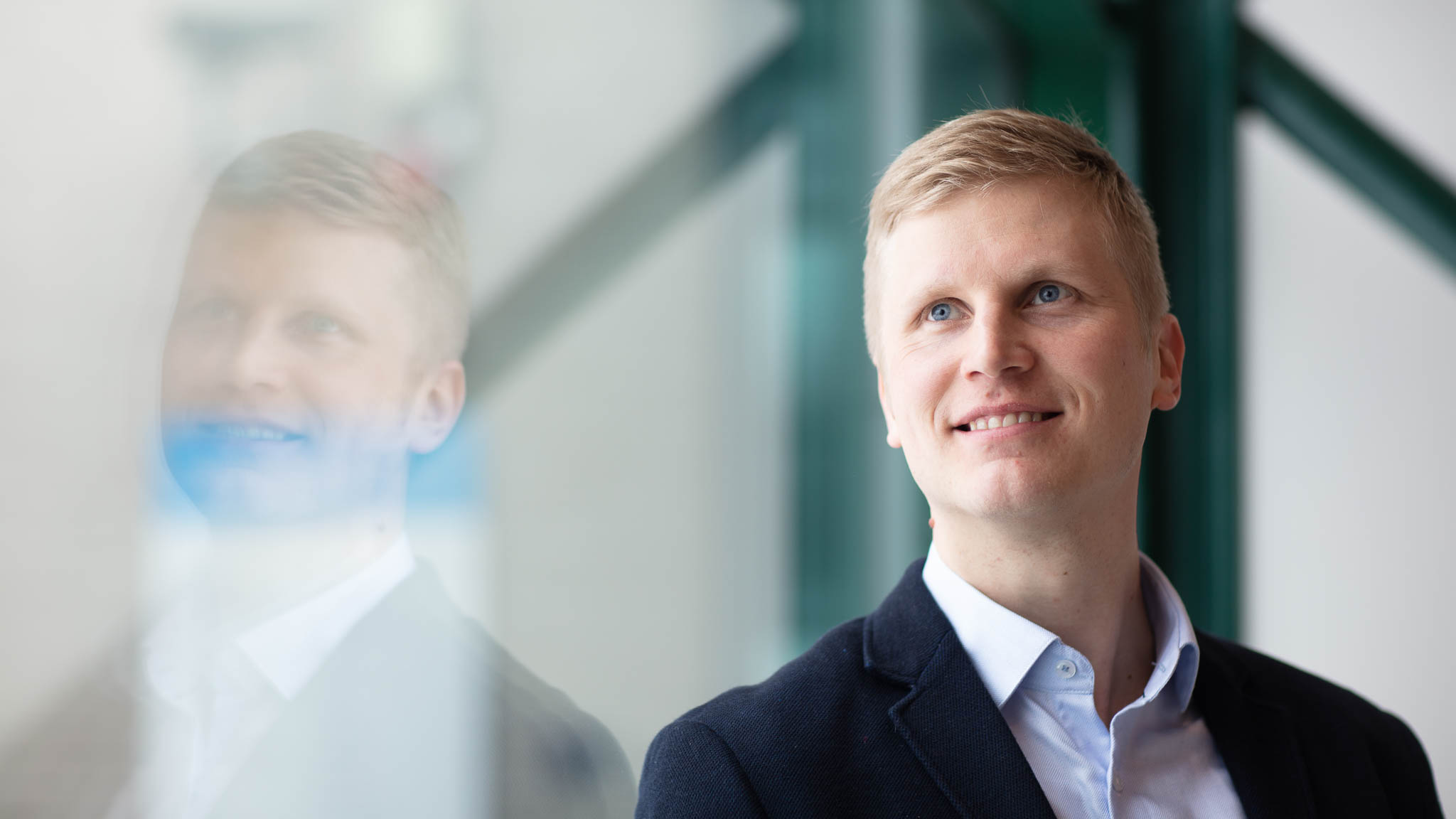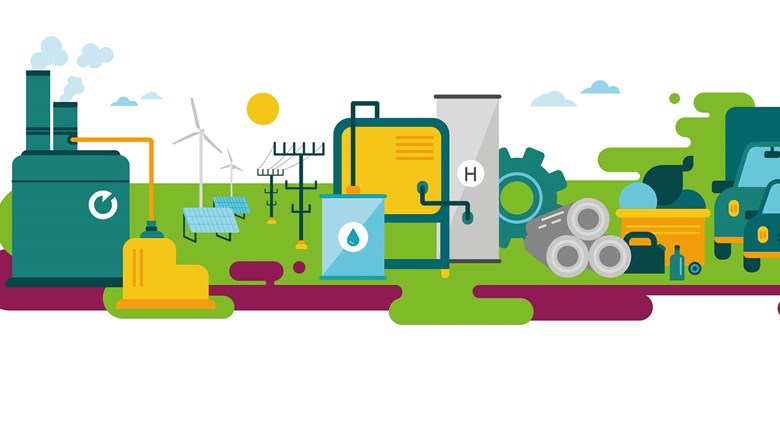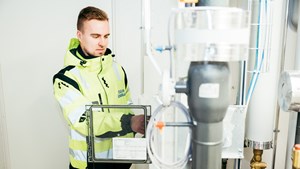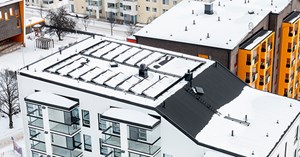Is hydrogen the answer?
Oulun Energia is looking for different alternatives for carbon-neutral energy production. Now the question is whether hydrogen could provide the answer and through it, more business.
Carbon dioxide is captured from the flue gases of heating plants, bonded with hydrogen into hydrocarbon, and the final product is sold, for example, as methane for car fuel. The heat energy generated in the production of hydrogen, meanwhile, is transferred to the district heating network to heat homes. This will bring down carbon dioxide emissions while developing new business.
Summed up as so, this seems simple, but in reality, the pattern is complex and would require money, a functioning network of partners, and technology, as well as an answer to the question, for example, of who produces the hydrogen.
 Oulun Energia’s Production Director Tommi Kantola
Oulun Energia’s Production Director Tommi Kantola
The problems and solutions are shared, says Oulun Energia’s Production Director, Tommi Kantola. A partnership is being developed with the University of Oulu, for example, and more networking is needed.
“I’m leaving a dating ad for possible partners—please call.”
Flue gases through the scrubbers
The simplified model of the above-mentioned is one example of what kind of things Oulun Energia is currently considering when the goal is to produce carbon-neutral energy and, at the same time, ensure customers have affordable district heating.
Oulun Energia is already planning to capture the carbon dioxide created from the combustion in Laanila’s eco- and biopower plants. The flue gas released from the chimneys of the power plants would mainly only be nitrogen and water vapor, with only a small part of the original amount of carbon dioxide. This would be done using separate carbon dioxide recovery technology.
“A solvent is sprayed into the flue gases of the combustion plant, which in theory could even be water, binding carbon dioxide to it, and then it is collected from the bottom of the scrubber as a solution. When this solution is heated, the carbon dioxide is released again,” explains Kantola.
Carbon dioxide should be utilised sensibly, and hydrogen currently offers the most noteworthy solution for this. Combining carbon dioxide and hydrogen produces hydrocarbons, which have many applications in, for example, the steel, plastics, pharmaceutical, or fertilizer industries. Fossil fuels are also hydrocarbons.
“Unlike fossil fuels such as natural gas, the fuel produced in such a process is not a nonrenewable resource, but can be produced endlessly.”
Hydrogen production consumes electricity
The currently prevailing method of producing green hydrogen is electrolysis, in which hydrogen is made from water. Water is put into the equipment into which electricity is also fed, and that breaks down the water into hydrogen and oxygen.
The electrolysis technology needs electricity to run and also produces heat. In the case of Oulun Energia, the heat would be utilised in the district heating network.
Then almost all of the energy could be recovered. How soon could such an endevour be fulfilled, then? The production of hydrogen is already a reality. At the moment, Oulun Energia is considering the meaningful applications for utilising hydrogen and reflecting on a suitable schedule for it. Kantola says that Oulun Energia should either produce the hydrogen itself or procure it from one of its partners.
A huge challenge of electrolysis is that the prevailing technology consumes a lot of electricity.
"As an electricity producer, Oulun Energia is part of the solution here. We are increasing the production of renewable electricity using wind power, and we are currently meeting the challenge. On a national or global scale, the sufficiency of electricity must be solved.”
Tommi Kantola thinks it is possible that the Laanila power plants can capture carbon dioxide as early as this decade. Similarly in this decade, there should be success in binding carbon dioxide and hydrogen in some useful way in further processing. However, building the system requires investments totaling hundred of millions of euros to be made—depending on the scale of the solution being planned. According to Kantola, such technologies are already in use around the world, so it is not just a matter of researchers’ plans.
A wide range of technologies and partners
New solutions require new technology; Oulun Energia’s planned solution requires, for example, carbon dioxide recovery equipment and hydrogen production equipment—according to Kantola, probably an electrolyser. In addition, equipment for further processing the hydrogen and carbon dioxide is required. For example, the production of methane requires methanation technology, which bonds carbon dioxide and hydrogen—depending on what the final product being manufactured is.
“And one essential piece is the heat recovery equipment, to prevent heat loss and redirect the heat to be circulated in the district heating network.”
The remaining problem is finding a hydrocarbon product for which there is a demand. In this, as well, the partners that Tommi Kantola initially invited to join are helpful.
“The decisions must be made together with the partners, each in different roles, this shouldn’t be done alone.”
For example, the role of an industrial partner could be producing hydrogen. Or if Oulun Energia produces the hydrogen, the partner could be in charge of further processing and sales.
“Even the technical production process is complex and could have components completed by several different parties, not to mention the distribution of the final product to industry and consumers.”
A local district heating network is necessary for producing the hydrogen–carbon dioxide bond, in order to utilise heat recovery. The actual finished products can be transported over long distances.
“The Bothnian Arc area is interesting because there is already some buzz about hydrogen and discussion about hydrogen pipelines, for example.”
Read more about the ways Oulun Energia develope it's production!
The article was originally published in the Oulun Energia customer magazine in February 2022 (in Finnish only). Written by Pirkko Koivu, illustration by Virpi Vainio.
.



